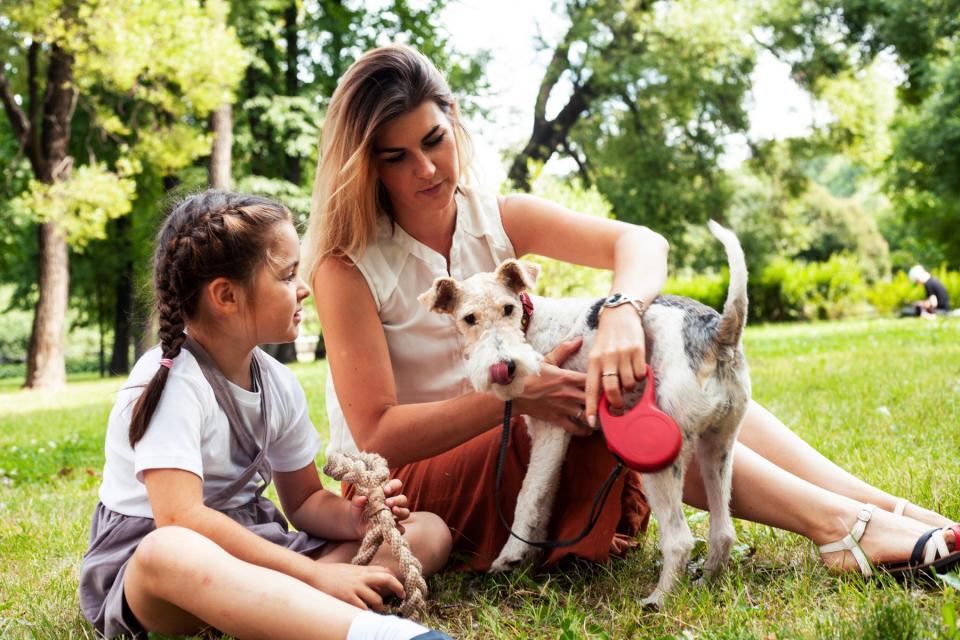The Unsure Stepparent: How to Build a Blended Family With Confidence
It can feel overwhelming to think about integrating yourself into your partner’s family, along with your children (if any) and their children. For many families, transitioning to two houses was already an exhausting ordeal with a prolonged adjustment period.
So it’s no surprise that many Moms and Dads feel intimidated by taking on another family transformation by blending two families. But with a little forethought and planning, stepparents can make the transition easier on themselves, their partner, and their children.
1. Be realistic about the complex dynamics
Becoming a stepparent is a unique process. If you already have your own children from a previous relationship, your established dynamics and boundaries might not translate perfectly to your new blended family. If both parents bring kids to the blended family, the parents might have different sets of rules, expectations, routines, traditions, and habits.
Especially at the beginning, it helps to accept most of these differences rather than trying to iron them all out. Each parent should respect the way their partner parents their own child. If it’s your stepchild in question, defer to your partner—and your partner should do the same for you. This is especially important in the context of reminders (“Did you walk the dog?”) and discipline.
Of course, you might want to set some joint rules from the outset. Establishing clear expectations at the beginning can prepare your family for real and lasting growth. Kids thrive with clear boundaries (although they like to test them, too!).
2. Don’t rush
Blending families takes time. It’s complicated. You might feel desperate for your partner’s kids to like you, but pressuring yourselves to achieve perfection just adds stress. It’s not healthy for you, your partner, or your kids.
In fact, pressuring kids to bond with a stepparent usually backfires. Instead of bonding faster, kids tend to pull back and build up barriers. The pressure makes the process longer.
Instead, think of bonding as a long-term mission. Your ultimate goal is raising happy and healthy children in a loving environment, a project that is measured in years rather than days. If your progress feels slow, remember that a rough day, week, or month is only a small percentage of your family’s time.
3. Foster real relationships
Although rushing is counterproductive, stepparents can still actively work toward building real and lasting relationships with their stepchildren. Just keep a slow and steady pace.
Learn about your stepchild
Discover their interests. What are their strengths, hobbies, and likes and dislikes? Think foods, activities, places, bands/singers, animals, movies, TV shows, comfort methods, games, colors, and school subjects.
Ask nurturing questions, not transactional questions. “What did you think of the new Marvel movie?” is an easygoing way to open up a conversation, but “Did you do your homework?” just adds pressure.

Spend time with your stepchild one-on-one
Start small. Think a quick run to grab an ice cream or a short jaunt around the neighborhood with the dog, not an all-day adventure. As you both settle into the relationship, you can stretch it to longer outings.
Do something your stepkid likes. After learning about their interests, pick an activity they would enjoy. If they like baseball, play catch or catch a game (on TV or in person). If they hate sports and love art, go to a ceramics studio or just buy new paintbrushes to use at home. It helps to have an activity to focus on so that silences aren’t awkward.
For many more ideas about how to bond with your stepchild, browse our e-book, The Interactive Blended Family Blueprint: How-To’s, Checklists, & Worksheets.
Spend one-on-one time with your bio child, too
Children sometimes worry that new family members will disrupt their established relationships, which can make them sad and angry. So make sure you give your child plenty of time and attention so it doesn’t feel like the relationship is fading away within the new family structure.
4. Be an addition, not a replacement
The term “bonus parent” exists because—ideally—stepparents increase the number of people in the family, without taking over an existing role. They create a new role. Your children should never feel as though a relationship with their stepmom or stepdad is a threat to their relationship with their Mom or Dad.
Children sometimes pressure themselves to remain loyal to their original parent over their stepparent. So never try to compete with your partner’s co-parent. Always talk positively about them (or at least neutrally) and never imply a competition or a need to choose between the two of you. Don’t display any jealousy of the other parent’s time with your stepchildren.
Show your stepkids that their definition of family can be big enough to include their two original parents and you. You’re a bonus, not a substitution.
The same goes for stepsiblings. Love isn’t a limited resource that will run out if you love one kid too much. You can love your own kids and love your stepkids, too. Make sure your bio kids know that your love for them hasn’t changed one bit—your love has just expanded to fit more kids in your heart.
5. Respect each other
Making space for a stepparent can mean growing pains for your family, but respecting each other is the best way to stay on track.
That includes respecting your partner’s co-parent. Kids get stressed and worry about loyalty if their bonus parent displays contempt or dislike for their other parent.
Respect yourself and your partner. You should each create space for your different parenting strategies and plans, especially while your blended family is still young.
And, of course, show your stepkids that you respect them. This will go a long way towards fostering a real relationship.
Blend thoughtfully—it’s easier and more effective
When you’re building relationships that you want to last a lifetime, you want to start them off right, not start them off fast. So have a conversation with your partner about your expectations early in the process, and frequently check in with them, your children, and your stepchildren.
Blending families slowly and strategically might seem tricky, but letting go of that pressure can relieve stress as well as nurture real relationships. And that’s worth whatever it takes.



